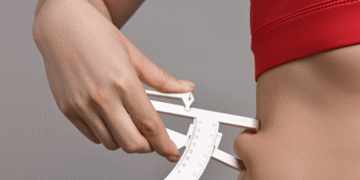No dumbbells? No gym? No problem.
You can increase your overall body strength, get your heart rate high, and enhance your joint movement ability all without leaving your home by performing a simple bodyweight workout. Such a 7-move bodyweight circuit is good for quite new trainees and intermediate-level fitness-lovers who are efficient in time and free from using equipment in their routines and would like to cover all their major muscles.
If you are in your apartment, outside on your patio, or you are doing a HIIT workout before work, these exercises will put pressure on your muscles and make your heart work hard. Initially, you need 20–30 minutes and little space.
How the Workout Works
This is a full-body circuit. Do each exercise for time (30–45 seconds) or reps (10–15 reps per side). Complete 3–4 total rounds, resting for 60–90 seconds between rounds.
This workout consists of the following parts:
- Legs and glutes
- Core and lower back
- Chest, shoulders, and arms
- Balance, mobility, and endurance
Now, let’s learn and practice the right technique and understand the benefits for each of the exercises.
1. Squat to Up-Downs

Muscles worked: Quads, glutes, calves, core
Begin with a squat and then the first foot is going backwards to a kneeling position and then the other one does the same. Then the squat up and finish in a stand-up position. Not only keep the chest lifted but also the core involved.
Why it works: It’s a powerful exercise that makes your lower body stronger, at the same time, your stamina increases and your muscles get a cardio workout. Moreover, your body & mind will be in the best shape possible
2. Push-Up to Arm Raise

Muscles worked: Chest, shoulders, triceps, core
Do a regular push-up. After reaching the top of the move, lift one arm straight forward. Go back down and do it again but this time change hands.
Form tip: To avoid rotating during the arm raise, it’s crucial to keep your hips level and your abs tense.
Why it works: In addition to boosting your pressing strength through the one-arm raise, you also work the muscles that stabilize your core, which ends in training your abs and shoulder stabilizers.
3. Hovering Tabletop Leg Extension

Muscles worked: Core, quadriceps, hip flexors
After you’ve elevated yourself to the tabletop position with your knees slightly off the floor, begin extending one leg back, making sure your hips are not twisted. Once done, get back to the start position and then change sides.
Why it works: The muscle deep in the core is activated, leading to the strengthening of the abdominal muscles and quadriceps, and it will also help in maintaining the proper alignment of the spine. All you have to do is feel the fire.
4. Reverse Lunge to Kickstand Squat

Muscles worked: Hamstrings, glutes, quads, core
Take a step back to a reverse lunge position. As you get back to your original position, put your rear leg slightly behind and get into a kickstand squat.
Why it works: It is a move that is done in this sequence that targets the legs from all directions, thus leading to better balance and the glutes and hamstrings being focused on.
5. Plank Row (Bodyweight Version)

Muscles worked: Upper back, core, arms
Place yourself in a high plank. Shift your body weight a bit and pull one arm backward, however, keep the elbow close to your body. Come back and change arms.
Form tip: Do not turn your torso. As you do the row, squeeze your shoulder blades together at the top.
Why it works: Very useful for making the upper part of your back work and with that we are able to develop the capability of the core and at the same time we are improving our upper-body posture and stability.
6. Wide-Knee Forearm Plank Taps

Muscles worked: External oblique, lower abs, the shoulder girdle
Start in a forearm plank, take a step wider than your hips and touch your right and left knees alternately to the ground. Do it slowly.
Why it works: By tapping, the side abdominal muscles are switched on and equally the core becomes involved because the posture and positioning of the spine are maintained. It may seem an easy task but actually, it’s not.
7. Side Lunges

Muscles worked: Inner thighs, glutes, and quads.
Take a sidestep, bend the knee of the side leg while the other knee is kept straight. Return to the starting position, and change sides.
Why it works: The sideways lunge is linear which means it helps work the muscles at the sides which are basically those in the inner thigh area. It therefore works on the adductors, stabilizers and helps the frontal plane.
How to Progress
When you have mastered these seven exercises:
- Consider performing a 4th and 5th round for more intensity
- Reduce the time spent resting between sets
- Benefit from resistance bands or light dumbbells to raise the difficulty of the exercises
- Try out HIIT with 40 seconds for work and 20 seconds for rest
To make yourself strong, resistant, and flexible, you do not have to go to the gym or lift heavy weights. The following 7 exercises are the answer to your problems. Thus, it is a very effective full-body workout that you can do at home and it will help you with your strength, endurance, and flexibility in the most easy and convenient way.
Mostly for:
- People who work a lot
- First-time exercisers who workout at home
- People who are always on the move
- People who are getting right back to regular work-out after a short break
Ready to train smarter, be consistent and get the best result in the least time? Then do the exercise and don’t forget to repeat it at least seven times during the week for an efficient result.















